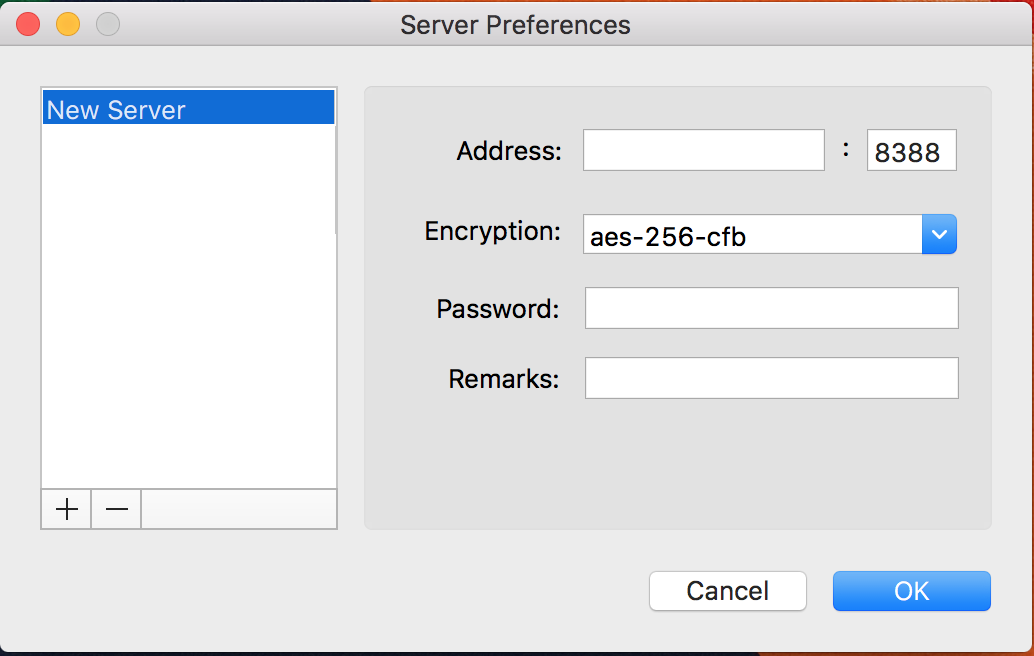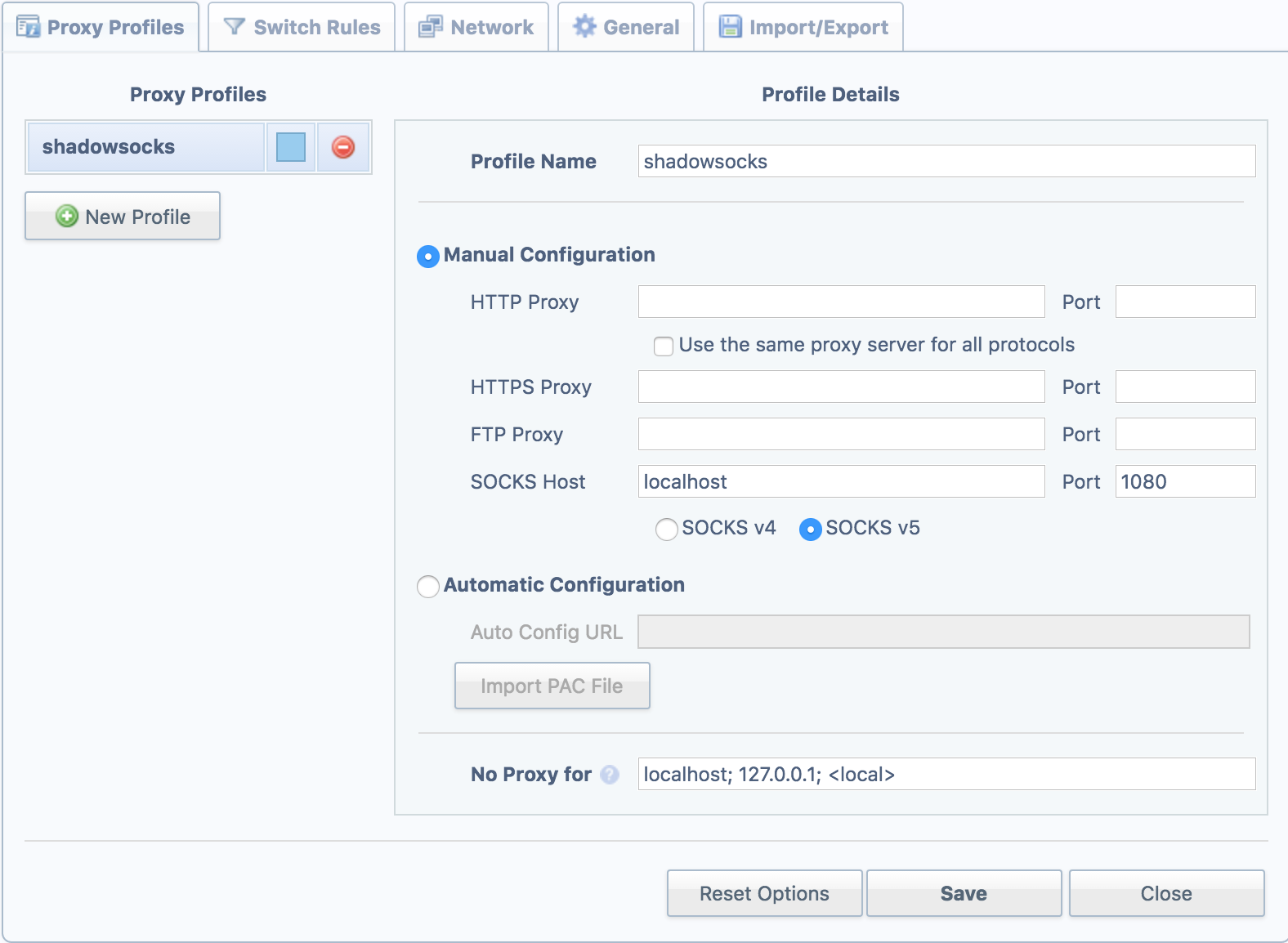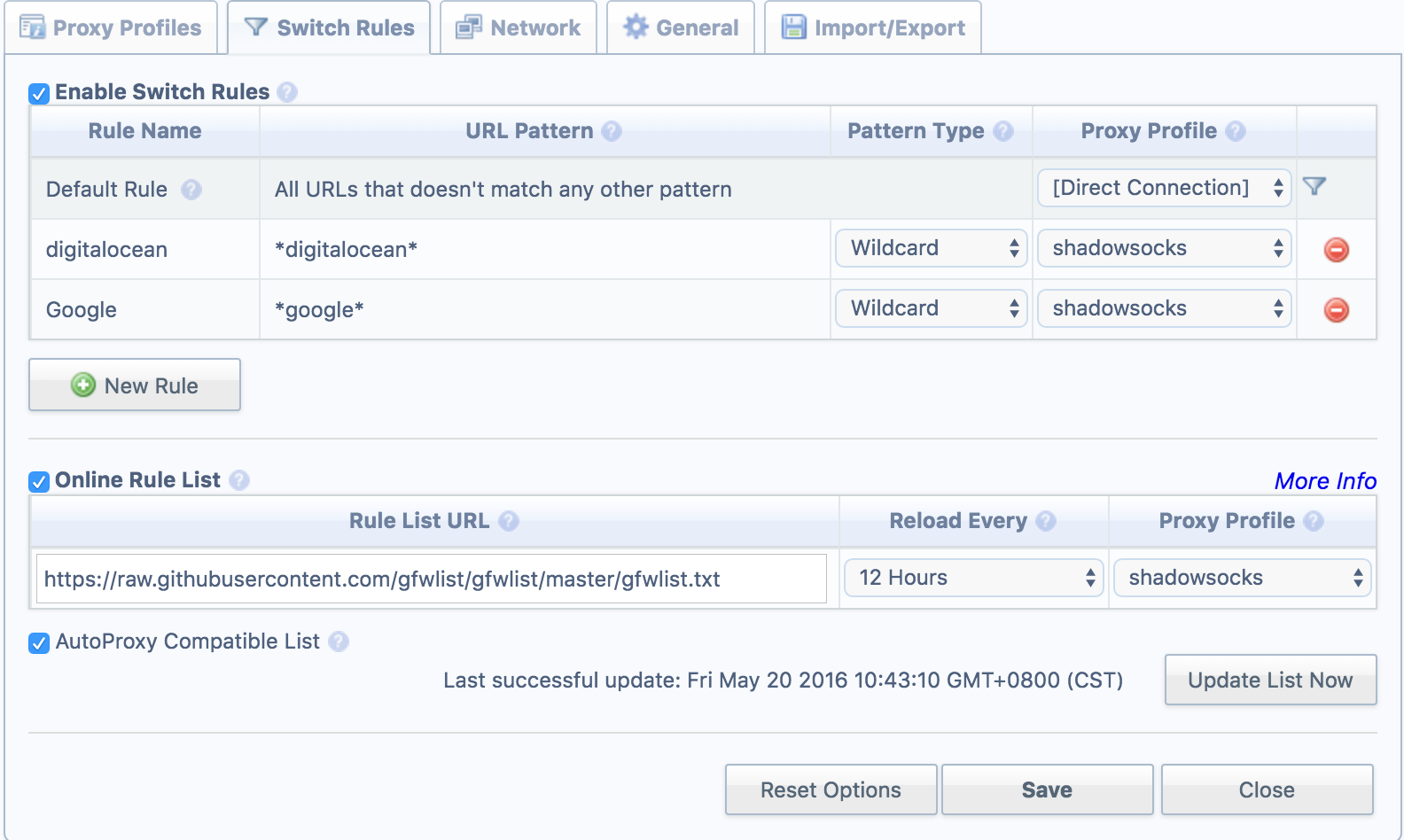论科学上网的正确性。
最近苦于云梯的各种不稳定,在经历了几天无法正常上网的情况下,还是决定在digitalocean部署一个Shadowsocks的服务实例。
大致过程很简单:
在Digitalocean创建一台Ubuntu的实例:

安装毕竟启动shadowsocks即可
1 | apt-get install python-pip |
添加配置文件/etc/shadowsocks.json
1 | { |
启动服务或停止服务
1 | ssserver -c /etc/shadowsocks.json -d start |
完成服务器启动之后,本机安装一个ShadowsocksX客户端即可

这里配置你的服务器IP地址,端口,以及密码即可。
完成后ShadowsocksX默认在本地的1080端口建立代理服务,这个时候你就可以使用诸如chrome的SwitchySharp在浏览器中通过代理上网

另外通过在SwitchySharp配置切换规则我们可以自动完成对不同域名网站的访问方式切换。
另外可以使用Github的https://github.com/gfwlist/gfwlist项目,该相互维护了一个官方的已被屏蔽的网站列表。
添加Online Rule List可以避免大部分的手动规则设置

大致如此。
科学上网
另外关于DigitalOcean的计费模式
另外关于DigitalOcean的计费模式的计费是按时计费,按照你开通的VPS使用时间来计费,当你删除VPS液滴后将会停止计费(关机还会照样计费)
所以在科学上网的同时,我们还要进行一些简单的计划经济手段,方式很简单,无外乎通过自动化的手段去创建一个Shadowsocs的实例,按需创建/销毁即可.
这里给一个例子,基于digitalocean api可以通过python创建和销毁实例。这里用fabric包装了一下,大致两个命令:
1 | fab create_droplet:token=<your digitalOcean token> |
实例代码:
1 | import digitalocean |
备注:如果要在本机运行这个代码需要将ssh的StrictHostKeyChecking禁用掉:
1 | #~/.ssh/config |
另外shadowsocks.json是从本地上传,需要的代码相同的路径创建shadowsocks.json文件,例如
1 | { |